Genuine leather stays in high demand for good reasons. Not only does it look spectacular, but you don't have to worry about it aging quickly or peeling. This isn't necessarily the case with faux leather.
In fact, one of the biggest complaints of faux leather sofas is that at some point, they began to peel, causing the sofa to look worn and old. But how can you combat this? And what causes it? We've looked into this problem, and in this post, we will discuss the answers to these questions.
Here are 2 techniques to repair your peeling faux leather couch:
Method 1. Use Leather Paint
- Pull off any peeled pieces of leather.
- Apply The Paint
- Let The Paint Dry
- Apply A Leather Finish
- Apply Additional Coats of Finish
Method 2. Use Leather Filler
- Remove Peeling Leather
- Apply A Leather Filler
- Let the Filler Cure
- Apply Additional Coats of Filler
- Create Texture On The Sofa (if applicable)
As you can see, there are a couple of methods that help you to repair your faux leather sofa if it starts to peel. The technique that'll be best for your specific sofa will depend on the grade of faux leather that you have. Continue reading to learn more about the steps involved in each method.
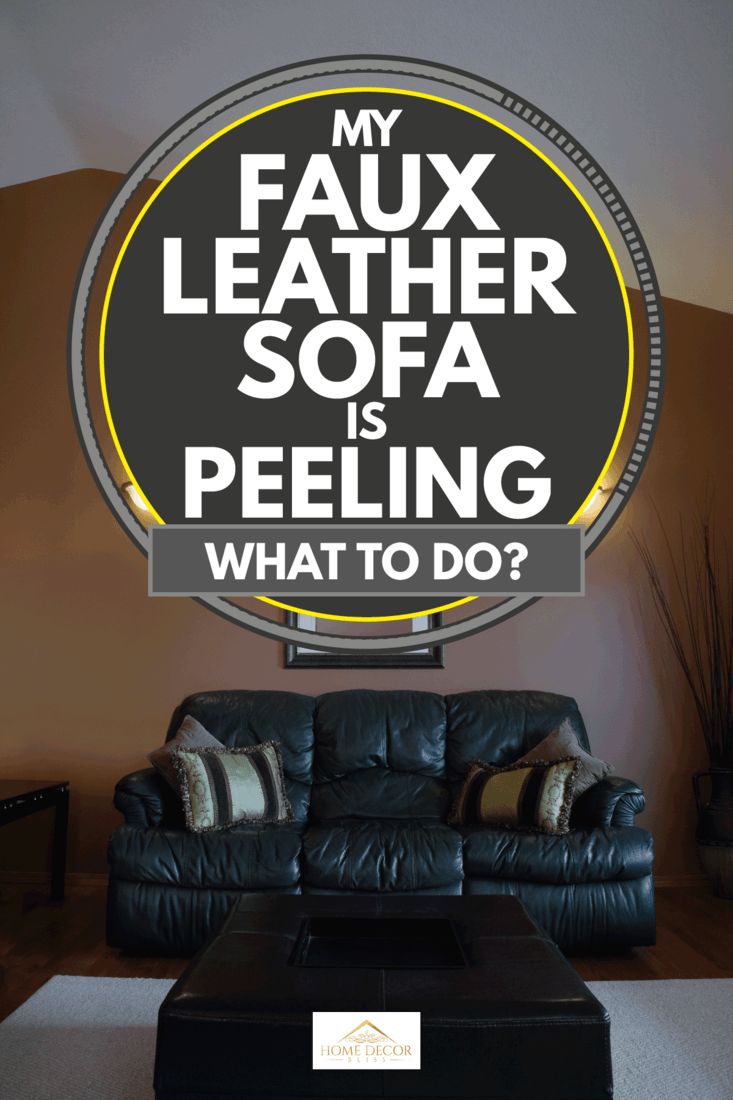
Why Does Faux Leather Peel And How To Prevent It
Faux leather is a popular choice for furniture. In prime condition, it offers the same aesthetically pleasing looks and comfort that real leather does, and often at a much lower expense. In other words, faux leather offers value for money.
However, real leather is considered more durable than bonded leather or PU leather - both types of faux leather. Just how robust and durable real leather is will depend on its quality. But generally speaking, it's unlikely to end up looking like this -
We sometimes add affiliate links and content that was curated and created by our team with the help of advanced ai tools to help showcase the best design styles.
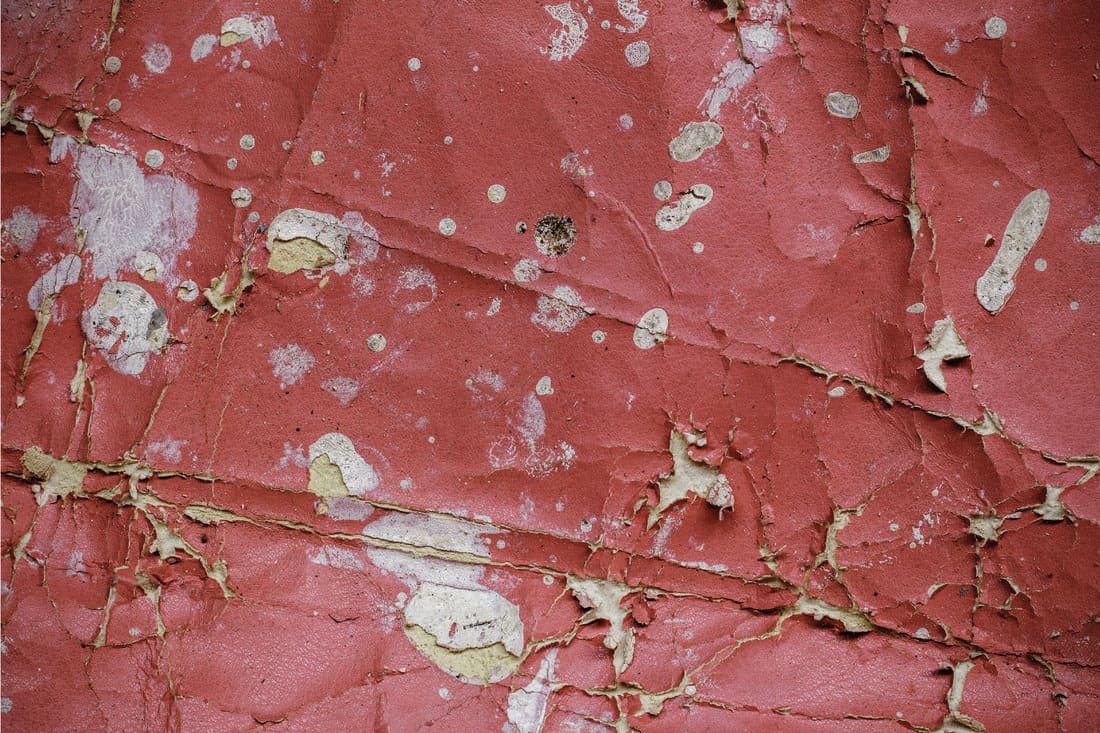 Faux leather peels because it is a bonded substance that contains a synthetic coating (usually polyurethane) to make it look very similar to genuine leather. This synthetic material is often fragile compared to real leather, and over time will begin to chip and peel as a result of everyday wear and tear.
Faux leather peels because it is a bonded substance that contains a synthetic coating (usually polyurethane) to make it look very similar to genuine leather. This synthetic material is often fragile compared to real leather, and over time will begin to chip and peel as a result of everyday wear and tear.
A couple of ways to prevent faux leather from peeling include applying oils such as coconut, olive, or baby oil to keep the leather from drying out and cracking, and/or applying a leather conditioner to keep the furniture completely moisturized.
Techniques to Repair A Peeling Faux Leather Sofa
Before applying any cleaning or repair products to your faux leather furniture, it's always best to check your care guide to prevent possible damage to the sofa.
Things you'll need:
- Scissors
- Vinyl or fabric adhesive
- Leather filler
- Plastic wrap
- Leather conditioner
- Putty knife
- Leather paint
- Razor blades
- Smoothing card
Method 1. Use Leather Paint
As the name suggests, with this method, you are in fact painting the leather, adding a thin layer that could help cover up minor scratches. Follow these steps to prepare the couch for the best results.
Step 1. Pull off any peeled pieces of leather
Inspect the sofa and pull off any loose bits of faux leather before beginning the repair. You can also take a damp microfiber cloth and run it over the sofa if you can't remove all of the bits behind the seating cushion or between the seams.
Be careful not to pull off any extra pieces attached to the sofa, which can worsen the already peeling areas. It's helpful to have a trash bag or trash can near to avoid creating a mess around the sofa.
Buy a microfiber cloth on Amazon.
Step 2. Apply The Paint
Take your leather paint and gently agitate to mix the contents of the jar. You can usually find leather paint available at any local hardware or art store. You may also want to check any nearby furniture stores as well.
To apply the paint, take a small paintbrush and dip it in the jar. Next, apply the paint to the area of the sofa that is peeling. It's best to start on the sofa's back and sides first, repairing the seating last.
Start on the sofa's left side and work your way to the right, applying just a small amount of paint to each area. Be sure to brush the paint on the sofa completely and pay special attention to the areas around the sofa's seams. If you can't find a leather paint that completely matches your sofa, consider buying two different paints and mixing them to see if they come closer to the leather's original color.
Step 3. Let The Paint Dry
Allow the paint to dry for about 30 to 40 minutes. If you add two or more layers to the sofa, wait for at least 20 to 30 minutes between each one so that the coats do not blend--which will cause excessive smearing. Use your finger to do a quick test to see if the paint is dry before applying each coat. If it still feels sticky to the touch, allow it to dry for another 10 to 20 minutes.
Step 4. Apply A Leather Finish
After the last coat of leather paint has dried, you can now apply a high-gloss paint finish. Leather finishes are fairly inexpensive, and you can typically find them in the same places as you would leather paint, such as hardware and furniture stores.
Be sure to clean off your paintbrush before applying the finish, so as not to accidentally re-paint the sofa - or use a new paintbrush. Give the finish about 20 to 30 minutes to dry. When applying the finish, be sure to use even horizontal strokes so that the final coat will not contain any brush lines.
Step 5. Apply Additional Coats of Finish
Apply additional coats of finish as needed (no more than 2-3). By doing so, you'll help the leather fabric hold together longer, which will prevent more peeling.
When applying the finish, do so liberally, but make sure to brush it into the fabric thoroughly so it doesn't dry on top of the surface.
When the finish dries, it should fade into the fabric. After applying the last coat of leather finish, the repaired sections should look very similar to the non-repaired areas.
Method 2. Use Leather Filler
Leather filler is a repair compound that is similar to the substance faux leather is made of. With this method, instead of simply painting over the damaged couch, you're actually filling in the tiny gaps and reconstructing the material.
Leather filler can be used for repairing real leather or faux leather.
You can buy leather filler on Amazon
It's also available as part of leather repair kits of various types and sizes. Just make sure you choose the right color that matches your furniture.
See this brown leather repair kit on Amazon
Step 1. Remove Peeling Leather
Use a pair of scissors or a razor blade to cut any peeling leather away from the sofa. You can also take a damp cloth and run it over the sofa to perform this task. Be careful not to remove any material that is still intact and avoid using your fingernails to chip away at the peeled areas. You only want to remove leather that is flaking and/or already loose
Step 2. Apply A Leather Filler
Use a putty knife to apply the filler to the sofa. Be sure to only apply the filler in small sections, adding no more than a tablespoon at a time to the putty knife.
Start on the sofa's back and sides, smearing the filler across the material where the leather has peeled. Be sure not to apply the filler to any intact areas on the sofa. Keep a dry cloth handy in case you accidentally apply too much filler, quickly rubbing it away with the cloth (you'll want to remove it before it cures).
Pay special attention to the back and seat cushions, as these are areas where you will likely need to apply additional filler. If you don't have a putty knife, you can use an index card or business card to remove any filler that has been pushed into the seams of the sofa (be careful when removing this with your putty knife as you don't want to exacerbate the peeled areas).
As you run the filler across the material, smooth it out with the putty knife so that it is evenly applied to the sofa's entire surface. Feather the edges with the end of your putty knife to create a professional finished look.
Step 3. Let the Filler Cure
The filler will take about 20 to 30 minutes to cure, and during this time, it's best to avoid doing any touch-ups on the sofa--this can cause a blotchy and uneven finish. It's also a good idea to ensure that no pets or small children use the sofa during this time.
Step 4. Apply Additional Coats of Filler
After the first coat of filler has dried, apply a second coat using the same technique as before. Remember to avoid accidentally applying the filler on the intact areas of the faux leather sofa.
Step 5. Create Texture On The Sofa (if applicable)
To finish off your repair job, you could also use plastic wrap to add a bit of texture to the faux leather sofa. If you plan to perform this step, be sure to do it before the leather filler dries completely. To do this, tear off a 10 to 12-inch section of the wrap and wind it around your hand. Next, take your hand and press it against the sofa, covering one section at a time.
How long should a faux leather sofa last?
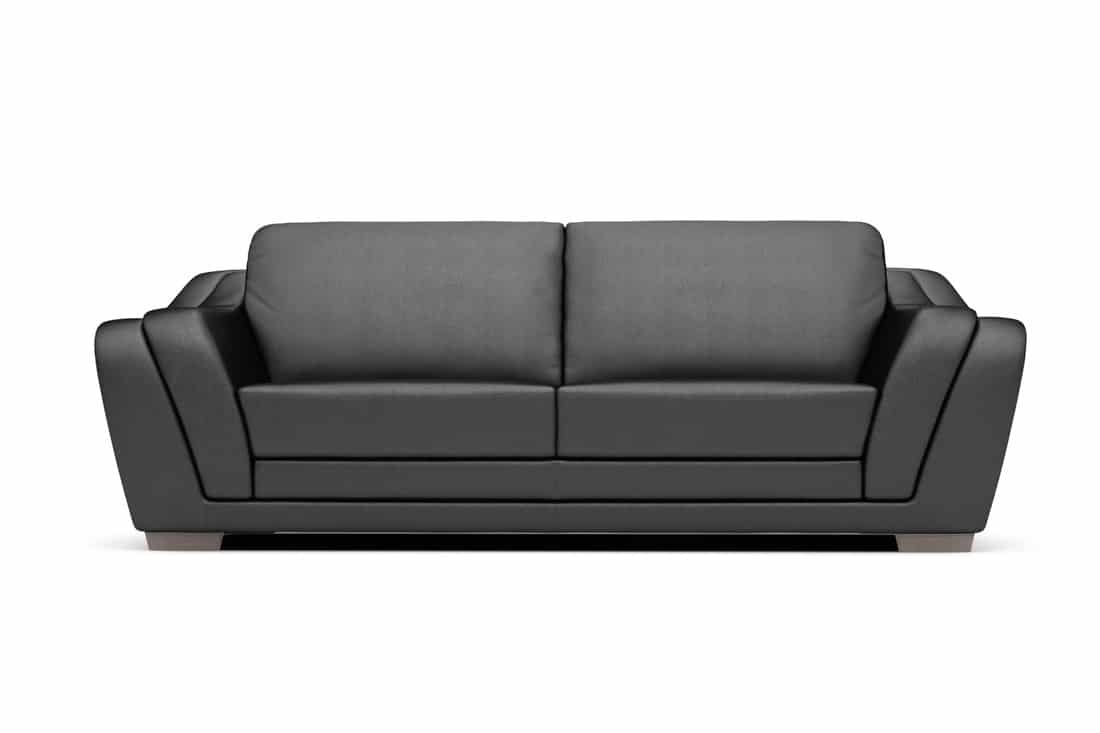
It depends on the grade of faux leather that you have. Like genuine leather, faux leather can come in various grades, though most decent faux leather couches will last anywhere from 5 to 7 years or longer if well-maintained.
Why does bonded leather crack and peel?
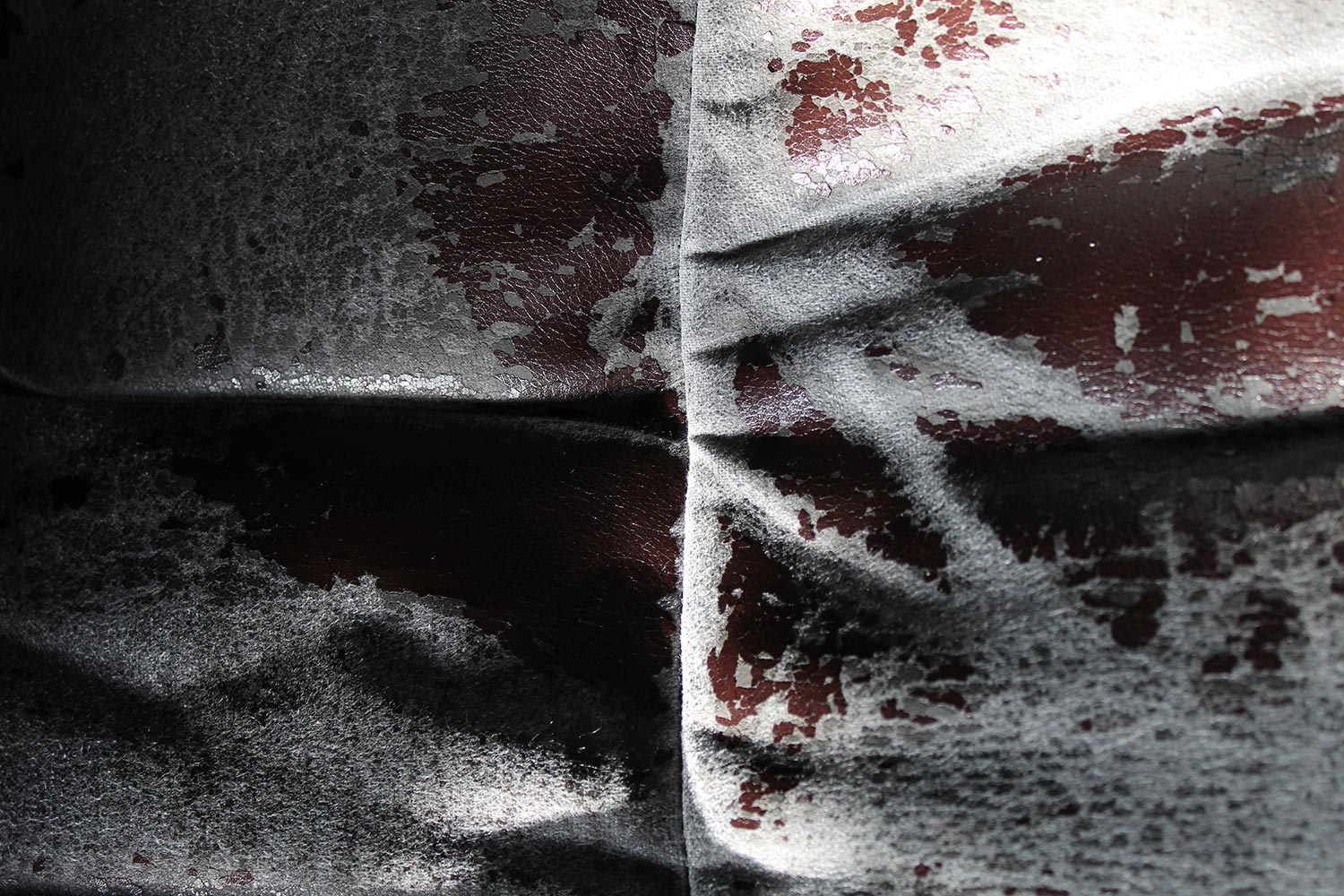
Bonded leather cracks and peels because the nature of the material does not allow for any "giving" and stretching, unlike real leather. Once the leather is stretched to the max, it will simply pull away from its backing.
Can you fix peeling bonded leather?
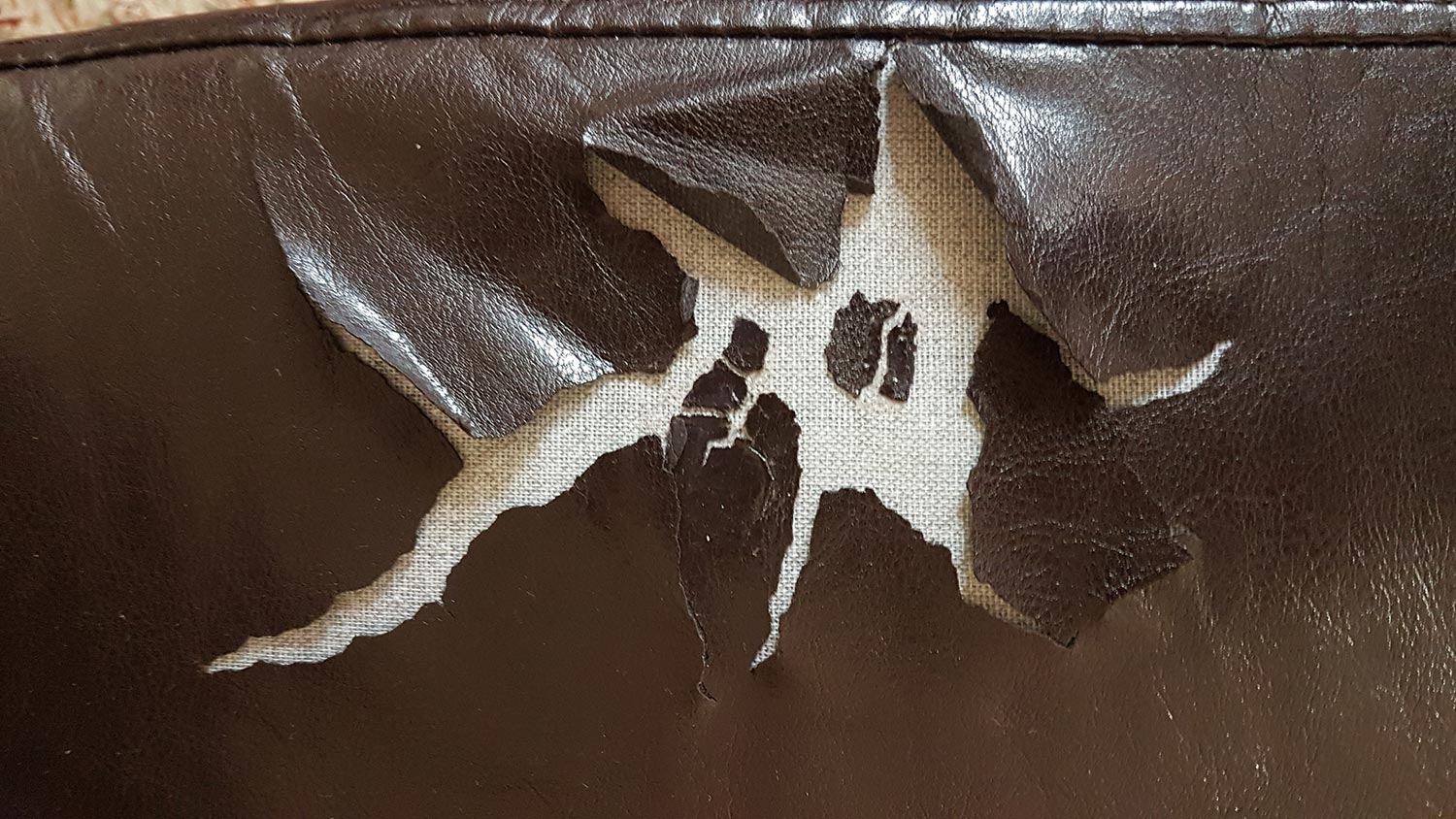
It depends on the quality of the bonding letter that you purchase and the extent of the peeling. Some products cannot be repaired, while some bonded leather furniture can be repaired using fillers and vinyl adhesives.
How long will a bonded leather couch last?
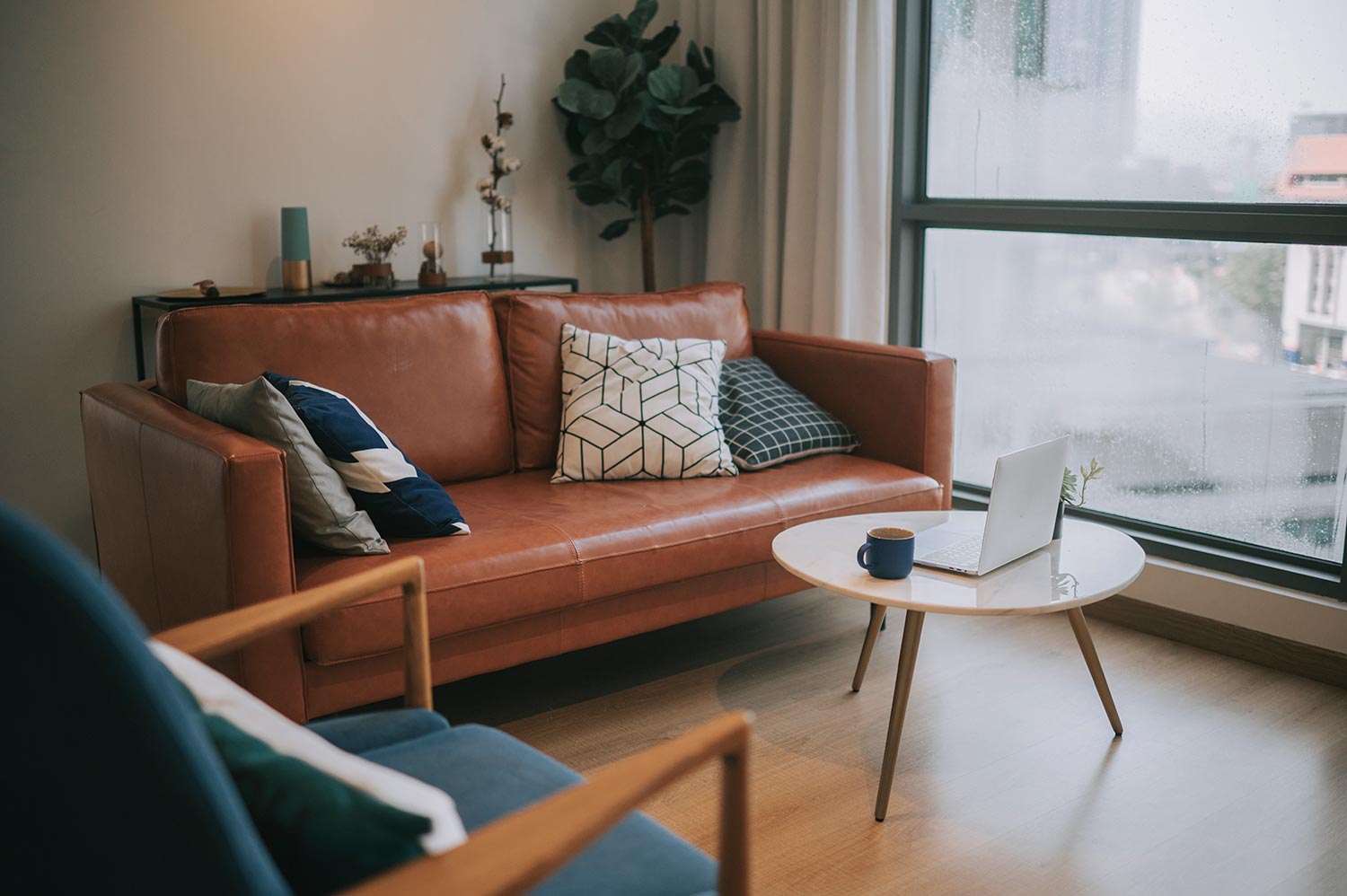
A bonded leather couch can last anywhere from 2 to 4 years, depending on the frequency of its usage and how well it is maintained.
Wrapping Things Up
We hope that this guide has provided you with the information you were looking for to repair a peeling faux leather sofa.
Before you go, be sure to check out our other posts: How To Fix A Large Hole In A Leather Couch
9 Types Of Leather Couches By Leather Type
FAQs
How do you fix a dog scratch on a leather couch?
Apply a small amount of Leather Binder to the scratched area. Slowly and evenly, rub the binder onto the affected area then allow it to cool. Repeat approximately 5 times. This process strengthens the weakened area and repairs your cracks and scratches.
Can scratches be removed from leather?
Deep scratches in leather can often be repaired using a leather conditioner and fine sandpaper. First, identify the scratch. If it is on the surface of the leather, you may be able to repair it with a conditioner alone. If the scratch is more than superficial, use fine sandpaper to buff out the scratch.
Can you fix cat scratches on a leather couch?
Use the Leather Re-Coloring Balm. It offers a quick fix solution to repairing cat scratches putting the color back into the scratches and blending them in with the rest of the sofa. However, the balm won't repair the roughness. It will just disguise it.
How do you fix claw marks on a leather couch?
You can fix claw marks on leather couches by following these steps:
Step 1: Trim any loose fibres around the affected area using a pair of scissors or a razor blade.
Step 2: Apply a leather binder to the claw marks to help fill in any gaps or cracks in the leather.
Step 3: Use sandpaper to sand down the area until it is smooth and level.
Step 4: Apply a heavy filler to the claw marks to further fill in any gaps or cracks that may still be present.
Step 5: Sand the area down again until it is smooth and level.
Step 6: Apply the first coat of colorant to the repaired area to help blend it in with the rest of the leather surface.







This is a very informative blog. Does the leather paint last? We just used the leather patch which seems to work well. However, we didn’t get the right color. Will keep this page in mind when we have to do this again. Thank you!
Does bonded leather only on the back and sides of a sofa peel if it’s never touched like the seats and arms are?